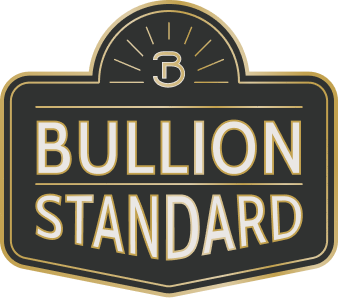Tax Implications of Buying and Selling Bullion
By Bullion Standard ·
5 min read
Investing in gold, silver, or palladium can be a great decision. If you're thinking about getting started, now is an excellent time. However, before you jump in, it's important to understand the precious metals tax implications involved.
Understanding IRS reporting requirements might seem intimidating, and many new investors overlook this aspect entirely. But knowing the rules in advance can help you avoid unexpected tax bills later.
In this guide, Bullion Standard will help you grasp the complexities of precious metals tax regulations, so you stay compliant and maximize your financial benefits.

The Basics of Precious Metals Tax
According to the IRS, precious metals are treated as capital assets, and any profit from their sale is subject to capital gains taxes.
A capital gain occurs when you sell an asset for more than its purchase price. The IRS taxes these gains based on the holding period:
- Short-Term Gains: Bullion sold within a year of purchase is taxed at your ordinary income tax rate.
- Long-Term Gains: Bullion held for over a year is taxed at a lower rate.
Furthermore, it's worth noting that if your income places you in the higher tax brackets, the short-term capital gains could be significantly higher. Being aware of these details can aid in planning your investments more effectively and avoiding unexpected tax liabilities.
IRS Reporting Requirements
The IRS mandates that you report certain precious metals transactions. This includes selling large amounts of bullion or conducting multiple smaller transactions that exceed a specific threshold.
Dealers must file Form 1099-B for these transactions, which reports proceeds from broker and barter exchange activities. You will receive a copy to include in your tax return, ensuring you accurately report your sales and comply with IRS regulations.
Here are some examples of reportable transactions:
- Sales of 25 or more 1-ounce Gold Maple Leafs, Krugerrands, or Mexican Onza coins
- Sales of 1,000 ounces or more of silver bullion (bars or rounds)
- Sales of 50 or more 1-ounce Gold or Platinum bars
Tax Implications for Different Types of Precious Metals
Different types of precious metals may have varying tax implications. Understanding these differences can help you plan your investments more effectively.
Gold or Silver Bullion
Gold and silver are the go-to choices for many precious metal investors, thanks to their popularity and historical value.
As with other assets, silver and gold bullion are subject to capital gains tax, and the rate you pay depends on your holding period. If you sell them within a year, you'll face higher taxes, as short-term gains are taxed at your ordinary income rate. Hold them for more than a year, and you'll benefit from the lower long-term capital gains tax rate.
Platinum and Palladium
Platinum and palladium are noteworthy for their distinct roles in various industries. They are taxed as capital assets, just like gold and silver, but their prices are more susceptible to fluctuations due to industrial demand.
Collectibles Precious Metals Tax Rate
Precious metals fall under the IRS category of collectibles, subjecting them to a higher long-term capital gains tax rate of 28%.
This rate is significantly higher than the standard rate for most other investments. Thus, investors should be mindful of this when considering the potential returns on their precious metals.
Properly timing your sales and seeking advice from a tax professional can help mitigate the impact of this higher tax rate.
Self-Directed IRAs and Precious Metals
Investing in precious metals through a self-directed IRA can offer tax advantages. One major benefit is tax-deferred growth, where your investments grow tax-free until you withdraw them.
Including precious metals in your retirement portfolio also provides diversification, acting as a hedge against inflation and market volatility.
However, only certain precious metals qualify under IRS guidelines. The metals must meet stringent purity standards: gold must be at least 99.5% pure, and silver must be 99.9% pure. Additionally, they must be in specific forms, such as certain coins or bars approved by the IRS.
Reporting Losses on Precious Metals
If you sell bullion at a loss, you can use those losses to offset other capital gains. This can help reduce your overall tax liability and can be a strategic way to manage your tax obligations over time.
To report investment losses, you’ll need to complete Schedule D on your tax return. This form lets you offset gains from other investments, potentially lowering your overall tax bill.

Record Keeping for Precious Metals Transactions
Maintaining accurate records of your precious metals transactions is essential for precious metals tax reporting. Keeping your records well-organized will simplify the tax reporting process and help ensure you remain compliant with IRS regulations.
Keep receipts, invoices, and records of sales to support your tax filings. You can also utilize tools such as Microsoft Excel, Google Sheets, or specialized financial software like Quicken or QuickBooks.
In Need of Precious Metals Tax Help?
By staying informed and compliant with IRS regulations, you can make more informed investment decisions and avoid potential penalties. Keep thorough records and continue to educate yourself on the latest tax laws affecting precious metals investments.
Understanding tax implications is crucial, and our team at Bullion Standard is here to guide you every step of the way. Visit our website to discover more and start your journey towards a well-informed and secure investment future.






















